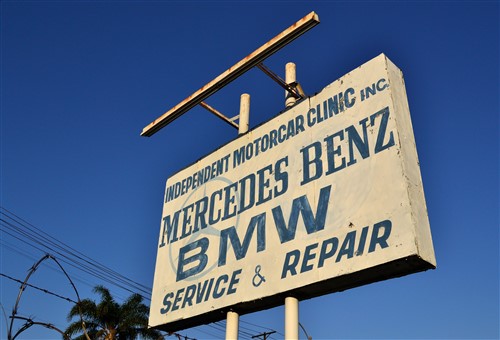
While it remains true that regardless of their country of origin, all cars largely work in the same way, it is also true that not all cars “speak” the same language. This writer was recently reminded of this fact when he received a rather cryptic email from a mobile BMW technician who needed a second opinion on a diagnostic issue with, as the email stated “…a 2017 petrol F30 with an N20 that has a problem with the CAS and the I-level that I think might be caused by the DME”.
So here is a question for you: do you know what the BMW tech was talking about? If you don’t know, you are among many other non-BMW technicians and mechanics who also don’t know, so in this article, we will clarify and explain some of the terminology in the language that European cars, and in particular, the language that BMW cars speak. Before we get to specifics, though, let us clarify-
Unlike most other car manufacturers that seem to sometimes a) pluck names for their product ranges out of thin air and b) market the same vehicle with different names in different markets, BMW uses a logical naming system that remains constant in all markets where BMW vehicles are sold, which is pretty much everywhere. Here is the short version of how this naming system works, using the vehicle referenced in the email to this writer as an example-
“F30” was one of three chassis designations, the other two being the F31 and F34, which were referred to collectively as the "F30" range, which designation(s) served as a common platform for a series of model iterations from 2011 to 2019. Two of these iterations, the coupe and convertibles, were used as the basis for the 4-Series range of models.
However, the clue to the actual vehicle lay in the “N20”, which referred to the 2L engine, which showed the vehicle in question was a 3-Series sedan that was built between 2011 and 2019. So how do we know it was a 3-Series vehicle? Simple; the N20 engine was only ever used in the 3-Series model range between 2011 and 2019. The 318 and 325 models used different engines, so the vehicle referenced in the email had to be a 320i.
So now that we have figured out what vehicle was involved, let’s see what the numbers in model designations mean, using the example of the 320i with a problem in the CAS-
In all cases, BMW uses the first digit in the three-digit series to indicate where a vehicle fits into the overall naming convention in terms of its size. So, using our example of the 320i, the “3” tells us the vehicle is a mid-sized car that fits into the middle of the size spectrum, as opposed to into the middle in terms of trim level or equipment fitted as standard.
The next two digits, i.e., “20” does not indicate the engine size or displacement; the second and third digits indicate the engine’s performance in terms of power output in kW, which in the case of our example vehicle, is between 165 kW and just over 200 kW, depending on the model variant.
The last digit in model designations is a lowercase letter that indicates the drive technology. In all cases, a lowercase "i" means that the vehicle has a petrol engine, while a lowercase "d" means that the vehicle has a diesel engine. If the last digit is a lowercase "e", the vehicle is a plug-in hybrid; an "xDrive" label means the vehicle is an AWD, and a "sDrive" label means the vehicle is either a FWD or a RWD, but note that this applies only to X and Z models.
So, in practice, when we describe a BMW model in non-BMW speak as a 2017 BMW 320i, every mechanic in the world will know exactly which vehicle model we are talking about. It is perhaps worth mentioning that AUDI and other VAG-group vehicles are also described by their chassis numbers; for example, in VAG circles, a “4L9” is a vehicle that we know as a 2007-onwards AUDI Q7 SUV.
Nonetheless, now that we know that we are dealing with a 2017 BMW 320i, let’s look at the systems the BMW technician was having trouble with, starting with-

In BMW and MINI vehicles, “CAS” stands for Car Access System, and it is this system that controls the starting sequence. This system is contained within the CAS module, and if you don’t work on BMW and MINI vehicles a lot, it is worth knowing that CAS module failure is an extremely common issue across both BMW and MINI model ranges, with the most common symptoms of CAS module failure being that-
In practice, the CAS module is critically important for two reasons. The first is that the CAS module functions as a security/anti-theft system, and the second is that the CAS module acts as a kind of central nervous system for the vehicle, in the sense that -
In terms of diagnosing CAS system issues, it is worth keeping in mind that the most common causes of issues in this system include adding/programming additional vehicle keys with non-BMW or MINI-specific equipment or performing software updates on any control module with non-BMW or MINI-specific equipment. This usually results in failed or aborted update procedures, which creates programming conflicts in several to multiple control modules, including modules that may not be related to the CAS system.
It should be noted that while it is sometimes possible to repair corrupted CAS module software with BMW or MINI-specific tools, it is often more cost-effective in terms of both time and money spent to simply replace a corrupted CAS module, which brings us to the-
Unlike most other vehicles in which it is possible to program or reprogram just one control module, BMW has something called the I-level, aka the Integration level, which is not so much a system as it is a state of programming that goes beyond having all the control modules in the vehicle running with the same software version.
The I-level requires that all the control modules in a vehicle run at the same level of programming, which is fine and understandable, but in practice, BMW has never been clear about what the term “same level” means, exactly. One assumes that it means that BMW has found a way for all control modules to be made aware of software patches, fixes, and updates that apply to one control module, but this is by no means certain outside of BMW dealership workshops.
Nonetheless, if you replace just one module, such as, for instance, a power steering module on a BMW vehicle, it is impossible to program just that one module even with a factory-grade scan tool. What happens is this: a BMW or MINI-specific scan tool will first interrogate all the control modules in the vehicle to determine their level of programming before updating all the modules that have fallen behind. This process can take anything from a few minutes to 24 hours or more, and that is assuming that you have a clean power supply and that no programming procedures are aborted or interrupted during this time.
Keep in mind that although some high-end generic scan tools will allow you to program just one module, this comes at the risk of creating severe programming conflicts between two or more control modules, which can and does create communication errors, fault codes, and inoperative systems. Moreover, issues of this type can then only be resolved with factory scan tools and specialised software that is usually very expensive or difficult to obtain in the aftermarket.
There is more bad news about BMW I-level programming: as a general rule, BMW control modules are typically intended for one-time use on a single vehicle, which means that used BMW modules can be very difficult, if not always impossible to reprogram for use on another BMW vehicle. Therefore, we strongly recommend that you research the possibilities and pitfalls of trying to make electronic components from one BMW vehicle work on another BMW vehicle because making used or donated modules work on another vehicle often involves modifying circuit boards and using special tools that are generally not available outside of BMW dealership workshops, which leaves us with just-
In Part 2 of this article, we will discuss the differences between coding and programming of European-made control modules, as well as DIN wiring diagrams, and the need to perform procedures known as “adaptations”, which are different from both coding and programming, on some electronic components on BMW vehicles.